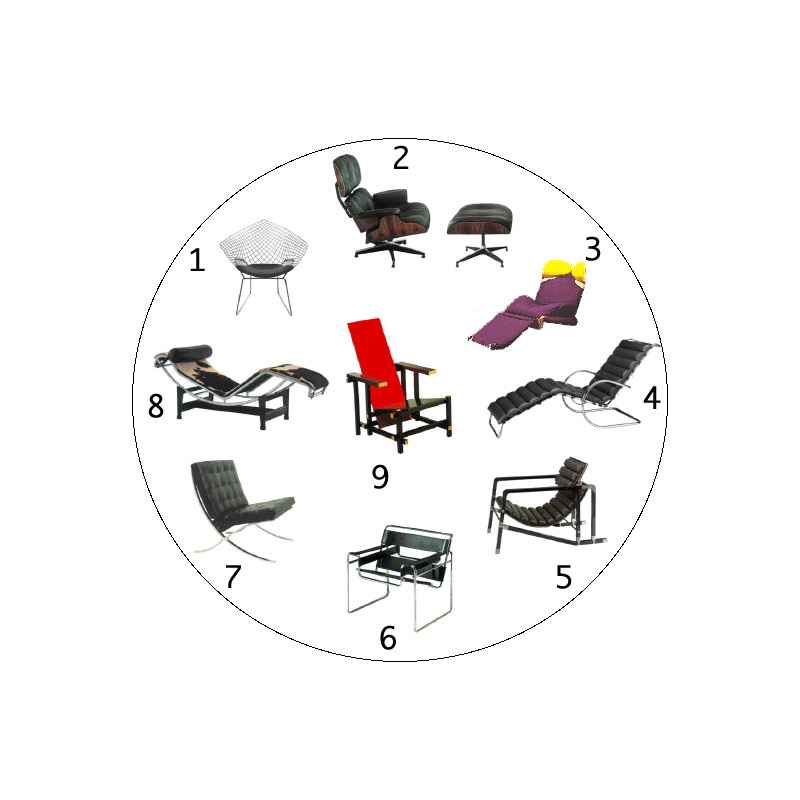|
|

design practice and theory
CLICK THE RED DOTS IN THE LOGO TO OPEN NEW PAGES AT RANDOM |
|
|

design practice and theory
CLICK THE RED DOTS IN THE LOGO TO OPEN NEW PAGES AT RANDOM |

You have at least three reasons to have a closer look at this page
The Rietveld red blue chair (9) is the topic of the research on these pages and is therefore placed in the center of the image above. It is the oldest chair represented here (1917) and is still on the market. The most recent one is the Wing chair (3) | ||||||
| You can also click on the following images to have a better look at
the different designs.
( I am still working on a more specific analysis of each of them; students or scholars are invited to participate) | ||||||
| The second and the third approach are treated on a separate page. |
|
|
|
Harry Bertoia | Wire Mesh Chair |
|
|
|
|
Ray and Charles Eames | Lounge Chair and Ottoman |
|
|
|
|
Toshiyuki Kita | Wink Chair |
|
|
|
|
Ludwig Mies Van Der Rohe | Easy Chair |
|
|
|
|
Eileen Gray | Transat chair |
|
|
|
|
Marcel Breuer | Wassily Chair |
|
|
|
|
Ludwig Mies Van Der Rohe | Barcelona Chair |
|
|
|
|
Le Corbusier, Pierre Jeanneret
and Charlotte Perriand |
Chaise Longue |
|
|
|
|
Gerrit Thomas Rietveld | Red-Blue Chair |
|
| to learn more about the Rietveld chair look at
these pages: some sites to find information on the Modern Movement
and that furnished some of the images on this page. |
| note 1 | Colin Law's e-mail: cal@hplb.hpl.hp.com |
| next page | What Peirce calls a Rhematic Indexical Sinsign is, for cabbalists, Hod the Sephirot of classification |
|
|
|
|
|
|